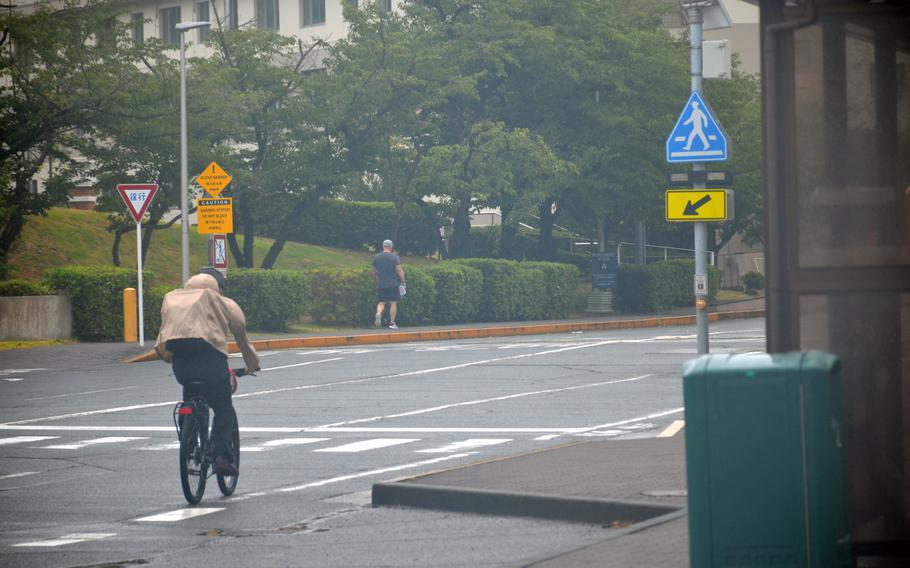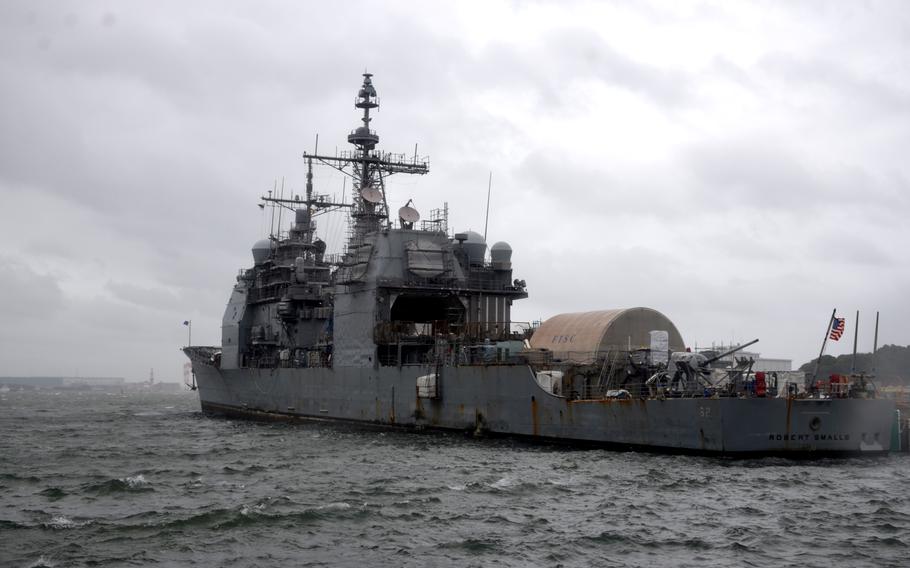
A bicyclist and pedestrian make their way towards the main gate at Yokosuka Naval Bas, Japan, on Aug. 16, 2024, as Typhoon Ampil passed Japan's eastern coast. (Alex Wilson/Stars and Stripes)
YOKOSUKA NAVAL BASE, Japan — Except for waterfront areas south of Tokyo, Typhoon Ampil proved less powerful Friday than the storm that millions, including thousands of U.S. military personnel and their families, had prepared for.
Ampil strengthened to a Category 3 storm but stayed offshore, spinning rain bands and wind gusts onto the peninsula east of Tokyo and the area beyond that includes a handful of U.S. military installations, including Yokosuka Naval Base, homeport of the U.S. 7th Fleet.
In Kanagawa prefecture, where the naval base, U.S. Army Camp Zama and Naval Air Facility Atsugi are located, more than 30 municipalities issued alerts for strong winds and rain.

The guided-missile cruiser USS Robert Smalls was one of the few remaining ships in port at Yokosuka Naval Base, Japan, as Typhoon Ampil pass offshore on Aug. 16, 2024. (Alex Wilson/Stars and Stripes)
Sections of Yokohama, north of Yokosuka, and neighboring cities opened evacuation centers and urged seniors to take shelter. Some shelters remained vacant, according to city websites.
In Kanagawa, Chiba and Saitama prefectures, all part of the greater Tokyo metropolitan area, approximately 2,280 homes were without power at 4:30 p.m. Friday, according to the Tokyo Electric Power Company website.
In western Tokyo, where Yokota Air Base is located, the day passed with periodic rainfall and intermittent wind of moderate strength. Like other U.S. bases, Yokota, an airlift hub, closed most of its shops, services and offices and required only essential personnel to report to work.
All three prefectures and the Tokyo metro area issued alerts for strong winds, heavy rainfall and potential landslides.
The typhoon was approximately 145 miles southeast of Yokosuka at noon Friday, with sustained winds of 132 mph and gusts of about 160 mph, according to the Joint Typhoon Warning Center.
It was forecast to pass about 95 miles east of Yokosuka without making landfall and continue a northeastern trajectory as it weakened, the center said at midday.
U.S. military bases in the affected area, except Yokosuka Naval Base, were in a tropical storm watch Friday, meaning destructive winds were possible.
The naval base, about 25 miles southwest of Tokyo, was at Tropical Cyclone Condition of Readiness 1 on Friday evening, meaning it still anticipated the arrival of destructive winds.